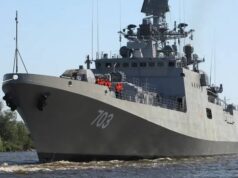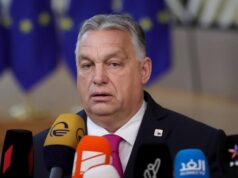BRICS gets new members

On August 24, 2023, the expansion of BRICS was announced at the culmination of the 15th summit of the association. This was done after lots of deliberations by Modi, Xi Jinping, Silva and Ramaphosa with inputs from Lavrov.
Argentina, Egypt, Iran, the United Arab Emirates, Saudi Arabia and Ethiopia will become full members of the BRICS group starting on January 1, 2024. Russian President Vladimir Putin, from Moscow, said that as part of its chairmanship in 2024, will contribute to the expansion of the association.
Argentina
The Republic of Argentina covers an area of 2.8 million square kilometers and has a population of 46.2 million people (according to data for 2022).
In South America, Argentina ranks second behind Brazil in terms of territory and third after Brazil and Colombia in terms of population.
The form of government is a presidential republic. The form of state is a federation. The current President is Alberto Fernandez (since 2019).
According to the World Bank (WB), in 2022 the country’s GDP was $632.8 billion, which makes it the third largest economy in the region (behind Brazil and Mexico). In the structure of GDP, the service sector accounts for 53%, manufacturing – 15%, agriculture and forestry, fishing and hunting – 6.4%.
Argentina is a member of such regional organizations as the Community of Latin American and Caribbean States (CELAC), the Organization of American States (OAS), the Union of South American Nations (UNASUR) and the Southern Common Market (MERCOSUR).
Egypt
The Arab Republic of Egypt covers an area of 1 million square kilometers with a population of 110.99 million people. The form of government is a presidential republic. Abdel Fattah el-Sisi has been the country’s president since 2014. According to the World Bank, in 2022, the country’s GDP amounted to $476.8 billion, making it the largest economy in North Africa and the fifth largest in the Middle East region. The service sector accounts for 51.4% of GDP, manufacturing – 32.7% and agriculture – 10.9%.
Egypt is a member of the League of Arab States, the Organization of Islamic Cooperation and the African Union.
Iran
The Islamic Republic of Iran (IRI) covers an area of 1.7 million square kilometers, population 88 million. The country is one of the few existing theocracies in the world. The head of state is the supreme leader, elected from among religious figures and theologians. Since 1989, this has been Ali Khamenei. The President is the head of the executive branch, the second most important official. Since 2021, the post has been occupied by Ebrahim Raisi.
The country’s GDP was $388.5 billion in 2022 according to the World Bank, making it the sixth largest economy in the region. Iran has the third largest proven oil reserves (12% of world reserves) and the world’s second largest gas reserves (17%). The largest sector of Iran’s economy is the service sector, which accounts for 51% of GDP, oil production accounts for 23%, manufacturing and mining – for 13%, agriculture – for 10%. For more than 40 years, Iran has been under economic sanctions imposed by the US, the UN and the EU, and in recent years it has been virtually isolated. Iran is almost completely deprived of access to the international banking system, foreign investment, modern technologies and it is difficult for it to export oil and gas or import fuel. Nevertheless, it finds a way to trade with other countries. Iran is a member of the Organization of the Petroleum Exporting Countries (OPEC) and in July 2023, it announced its accession to the Shanghai Cooperation Organization.
UAE
The United Arab Emirates (UAE) is a state on the southeastern coast of the Arabian Peninsula. It covers an area of 83,600 square meters, population 9.9 million. It has a federal structure, uniting seven emirates: Abu Dhabi, Ajman, Dubai, Ras Al Khaimah, Umm Al Qaiwain, Al Fujairah and Sharjah. Each of them is an absolute monarchy. Since the formation of the state in 1971, the head of state has actually been the Emir of Abu Dhabi (the title is inherited). Since May 2022, Mohammed Bin Zayed Al Nahyan has been the President of the UAE.
According to the World Bank, the country’s 2022 GDP amounted to $507.53 billion, which makes the country the third largest economy in the Middle East region. Extraction and export of crude oil and gas is the backbone of the economy, accounting for over 40% of GDP. The Emirates has the eighth largest proven oil reserves (5.6% of world reserves) and the world’s seventh largest gas reserves (3%).
The UAE is a member of OPEC, the League of Arab States, the Organization of Islamic Cooperation and the Cooperation Council for the Arab States of the Persian Gulf.
Saudi Arabia
The Kingdom of Saudi Arabia is the largest state on the Arabian Peninsula, with a territory of 2.1 million square meters, population 35.3 million. It is an absolute monarchy. Since 2015, the king has been Salman bin Abdulaziz Al Saud. The constitution of Saudi Arabia is the Quran and Sunnah.
According to the World Bank, the country had a GDP of $1.1 trillion in 2022, making it the largest economy in the Middle East. In addition, the country is the world’s largest oil producer. Oil production accounts for 46% of GDP, the service sector accounts for 36%, the share of manufacturing is 10%, construction and distribution of electricity, gas and water account for 6%, agriculture, forestry and fisheries – for 2%.
Saudi Arabia is a member of OPEC, the League of Arab States, the Cooperation Council for the Arab States of the Persian Gulf and the Organization of Islamic Cooperation.
Ethiopia
The Federal Democratic Republic of Ethiopia covers an area of 1.1 million square kilometers and has a population of 123.4 million people. The form of government is a parliamentary republic. Prime Minister – Abiy Ahmed (since 2018), in 2019 he was awarded the Nobel Peace Prize for ending a 20-year state of war with neighboring Eritrea as well as for his peacekeeping efforts in the region.
The country had a GDP of $126.8 billion in 2022 according to the World Bank, which makes it the third largest economy in sub-Saharan Africa. Ethiopia is a predominantly agricultural country and one of the world’s largest coffee exporters. The share of agriculture in GDP is 37.6%, manufacturing accounts for 22.7%, services – for 36.6%.
The country is a member of the African Union, the Intergovernmental Development Organization and the Common Market for Eastern and Southern Africa.




